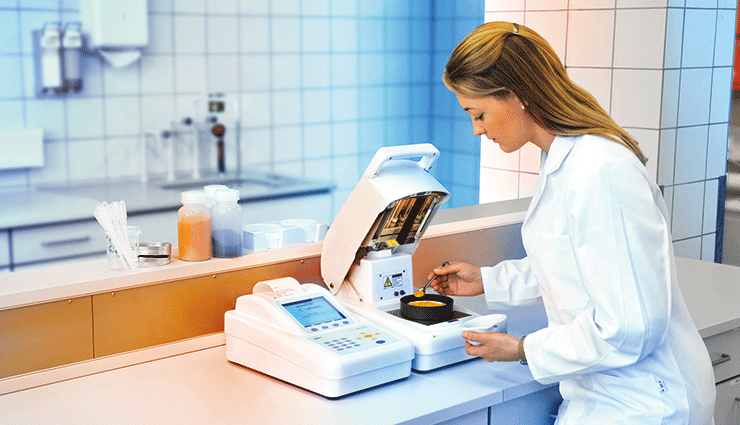It is hardly surprising to see so many different analysis tools when you walk into a food or beverage manufacturing/distribution plant. Food and beverage companies are held to a variety of high quality standards, but the stakes continue to rise. With the press covering food issues and outbreaks of bacteria, analysis not only keeps customers healthy, it also prevents the company from losing a substantial amount of money.
Unfortunately, it is not good enough to have a reliable form of analysis; it is also important to obtain results faster. The industry is changing, and the way a company analyzes its product should change with it. A solution to these evolving industry standards is to collect and act on reliable moisture readings in real time. The right moisture analyzer will not only reduce test times but also give a company the peace of mind knowing its results will continue to match its certified method.
Moisture analysis is conventionally done using a vacuum or air oven and a balance. The test is usually determined by an accredited test procedure, such as the one approved by AOAC International, which publishes standardized, chemical analysis methods designed to increase confidence in the results of chemical and microbiologic analyses.
The sample is weighed to a specified amount and allowed to dry in the oven according to procedure. Depending on the test, the oven can take as little as 1 hour, or as long as 18 hours. Some tests also require the operator to check the sample once an hour until a constant weight is reached. These tests not only take up a great deal of time, they may also cause many product quality issues. Many times the plant will not be able to run the tests as often as stipulated, due to time pressure, and once a result is in, the product may already have been packaged and ready for distribution. This leads to a loss of product and supplies, not to mention the time wasted by operators. It also limits the point at which the plant can test the product. With the long test times, a plant cannot make quick changes to the procedure to avoid wasted time or to increase efficiency. By checking the product at key times in the procedure, the plant can then create more of their quality products and decrease production times and costs.
A moisture analyzer can be programmed to closely match a reference test but takes minutes rather than hours. There are various types of moisture analyzers, but each contains a weighing system and a heating source, which heats the sample for the duration of testing while the weighing system detects weight loss. The typical test heats the sample more efficiently, creating faster sample testing times. Most analyzers allow the user to change temperature, weight, and endpoint criteria settings, which allow the operator to create a test that matches the reference procedure. The machine does the weighing, which eliminates some of the human error seen in reference testing. A moisture analyzer allows the operator to achieve real-time analysis on the product. This not only reduces test times, but saves a company from excess waste, while increasing productivity on the line.
Cessna is applications specialist at Sartorius Corp. Reach her at [email protected].
ACCESS THE FULL VERSION OF THIS ARTICLE
To view this article and gain unlimited access to premium content on the FQ&S website, register for your FREE account. Build your profile and create a personalized experience today! Sign up is easy!
GET STARTED
Already have an account? LOGIN


